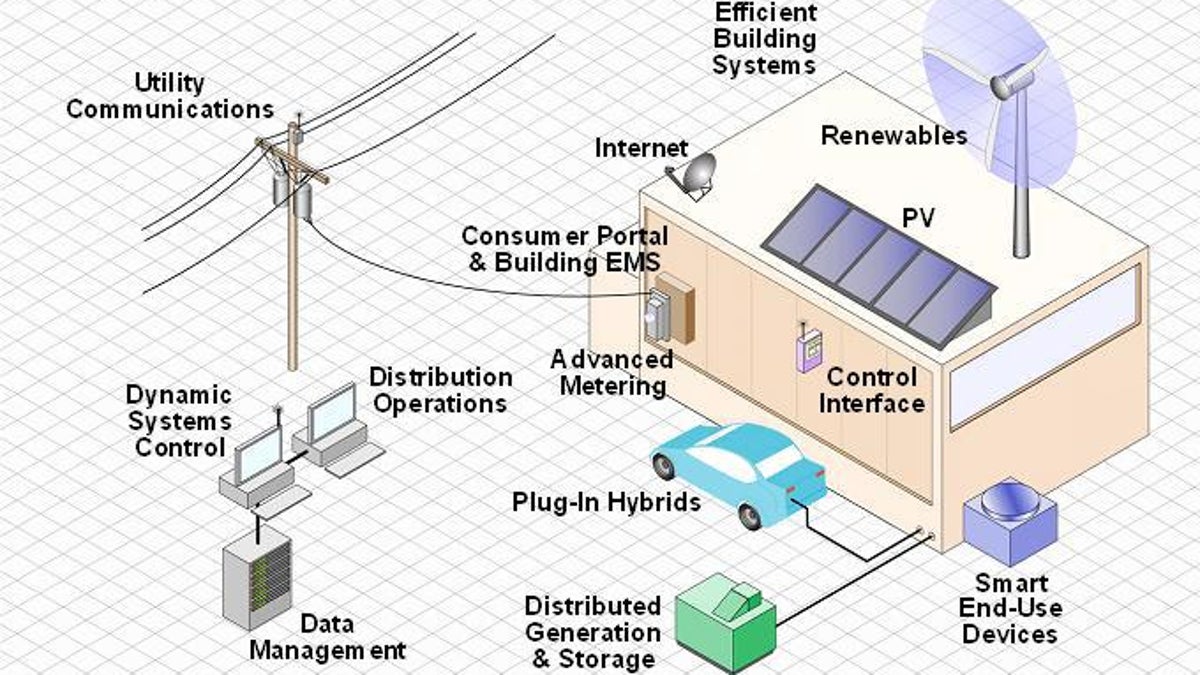Smart-grid plan overhauled to involve consumers
Utility National Grid is taking a second try at its smart-grid proposal, a reflection of how the utility industry is struggling to engage consumers in upgrading the grid.

Utility National Grid has withdrawn and is resubmitting its smart-grid proposal, a sign of how poor understanding of the smart grid among consumers is working against the country's efforts to modernize the electricity grid.
National Grid had worked two years on a smart-grid pilot program (PDF) to install many technologies both on the transmission grid and in people's homes in Worcester, Mass. But after making its proposal to regulators, it pulled back in February this year and will try to submit a revamped proposal by the end of the year.
Rather than presenting a menu of utility-conceived technology upgrades to regulators, the second smart-grid proposal is being formed with input from customers and city officials. The utility is hosting a two-day "community summit" later this month to foster dialogue among different stakeholders, according to Cherri Warren, vice president of asset management at National Grid, which serves parts of Massachusetts, New York, Rhode Island, and New Hampshire.
"What we're really hoping we will learn is how customers want to be communicated with and what energy options they want," said Warren.
For a utility to host a "community summit" to better understand customer needs and explain new technology is a far cry from the traditional utility-ratepayer relationship. For decades, the primary job of utilities has been delivering reliable power in their territories.
Now, utilities have been thrust into a position where they are under pressure to modernize the electricity infrastructure to improve reliability and pollute less. Smart-grid technologies are designed to find outages quicker, reduce wasted energy, and integrate more renewable-energy sources.
In National Grid's case, a good portion of its smart-grid proposal will focus on the actual transmission grid with improvements to isolate problems quicker and better manage the flow of energy, said Warren. For example, the utility plans to have sensors called phasor measurement units (PMU) attached to transmission lines to monitor the electrical signal and voltage.
Some of the changes in its proposal reflect how utilities are getting more comfortable with advanced technology. It's installing large-scale flow batteries attached to a wind turbine and solar array. It also intends to install electric-vehicle charging stations. The communications infrastructure from smart meters back to the utility is expected to be based on IPv6, said Warren.
Consumer buy-in
In the original proposal, National Grid had planned to test three types of energy monitoring products--a Web site, a simple in-home energy display, and smart thermostats.
Although many companies have developed displays and gadgets for monitoring energy usage, the uptake with consumers has been slow, say people in the industry. As a reflection of how active energy monitoring has limited uptake, Microsoft, Google, and Cisco abandoned their home energy products this summer.
Related stories
• Are consumers ready for the smart grid?
• EnergyHub makes beeline to consumer smart grid
• Coalition enlists consumers in smart grid
National Grid's plan there is to have a "smorgasbord" of options, said Warren. Just like people have very personal choices around their cars, different people will want different home energy products. More technically oriented people will crave detailed information while others will want a simpler approach, such as better tools to program and control home thermostat settings. Farther out, it's still not clear what consumers will be asking for and what technology will be available, Warren said.
For the utility industry as a whole, the success of many smart-grid programs relies on getting consumers to support the societal benefits of the smart grid and to increase home energy efficiency. But like many other industry observers, Warren thinks the industry as a whole has not gotten broad-based consumer buy-in for the smart grid.
"I don't think the industry has brought customers along in the journey and really understands what they need. We're all doing pilot programs but at the end of the day, it's about choice for the consumers and allowing them to interact with energy in a very different way," she said.

